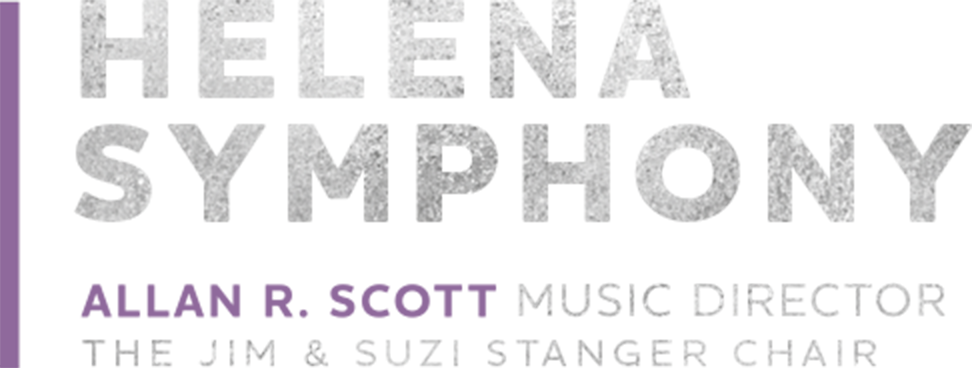The Helena Symphony rings in 2023 with Liszt & Also Sprach Zarathustra on January 28 at 7:30 p.m. in Helena Civic Center! Richard Strauss’s massive, mesmerizing masterpiece, Also Sprach Zarathustra, contemplates human existence, and the opening is instantly recognizable from the film 2001: A Space Odyssey. Liszt takes on the journey of life, love, and destiny in his lush Les Préludes before we indulge in his light-hearted and famous Hungarian Rhapsody No. 2.
“I think people who are only familiar with the first ninety seconds of Also Sprach Zarathustra are going to be blown away by the music that follows. The orchestra is large, and the sound is massive,” explains Director of Patron Services Scott Kall. “The Hungarian Rhapsody No. 2 is an immensely fun piece, and recognizable the minute it is heard. If you’re a fan of Warner Brothers cartoons, you can’t miss it!”
“Also Sprach Zarathustra is a very large scale work that asks the question, ‘Who are we? How do we deal with love, conflict, and existence?’” says Maestro Allan R. Scott about Masterworks III. “Les Préludes and Also Sprach Zarathustra are interjected with the extremely fun Hungarian Rhapsody by Franz Liszt. If you have seen a Tom & Jerry or Disney cartoon, you have heard the Hungarian Rhapsody! It is an exciting beginning to 2023.”
ALSO SPRACH ZARATHUSTRA
Known today for its famous opening used in the 1968 film 2001: A Space Odyssey, Also Sprach Zarathustra is based
on the writings of Friedrich Nietzsche (1844-1900), specifically the philosopher’s attacks on organized religion, government, and civilization, which he claims all inhibit humankind’s aspiration to endless self-determination. Nietzsche published his Also Sprach Zarathustra (1883-1885) in four parts and speaks through the voice of the 6th century Persian prophet Zoroaster meditating and then shares his thoughts with society, including such well-known phrases and concepts of “God is dead,” the “Will to Power,” and the “Superman” (Übermensch).
The instantly recognizable opening begins with the stirring of low strings, contrabassoon, organ, and bass drum until the trumpets come over the horizon, suggesting darkness to light and the theme of Nature. When the entire orchestra
unleashes, the horns quote the Gregorian chant Credo (“I believe in one God”). “In the end, we do not just listen to Also Sprach Zarathustra, we experience it. An awareness or even acceptance or refusal of the different themes of Nietzsche is perhaps somewhat irrelevant. The musical journey is real. We know that we endured something that touched us emotionally, intellectually, and spiritually. If nothing else, Nietzsche got one thing right – ‘Without music, life would be a mistake,’” explains Maestro Allan R. Scott.
~
LES PRÉLUDES & HUNGARIAN RHAPSODY NO. 2
“Within a few minutes Les Préludes moves, somewhat recklessly, from sheer bombast to lyrical tranquility back to
overwhelming sounds of strength,” says Maestro Scott. “Like Beethoven in his Pastoral Symphony, Liszt is creating ‘more of an expression of sentiment than a painting,’ as Beethoven explained. Liszt’s development of the ‘symphonic poem’ mirrors his art and his life, for Liszt himself was about extreme contrasts. Whether one reads the words that Liszt used or not, it seems this freeform style of composing works like Les Préludes allowed, even with its lack of congruity at times, a sense of powerful creativity that still allows us to conjure up our own narrative to his musical story.”
~
Although Liszt was Hungarian, he never spoke the language as his family assimilated as Germans. He was,
however, influenced by the gypsy music of his homeland. As one of the great showmen of his time, Liszt’s performances
were musically and visually exciting, and at times he would perform the Hungarian music in native costume. The
Hungarian Rhapsody No. 2 uses traditional gypsy themes from the Hungarian verbunkos and czárdás dances.
“From the overly dramatic and pompous opening to wonderfully silly second half, the themes are immediately
recognizable,” says Maestro Scott. “Hungarian Rhapsody No. 2 has become a part of popular culture for much of the last
century as the themes have been used by the Marx Brothers, but mostly recognized in animated cartoons from Walt
Disney and the Warner Brothers to Walter Lantz and Hanna-Barbera. The playfulness and virtuosity make for one of the
more unforgettable moments in all of Liszt’s music.”
MASTERWORKS SERIES PRESENTED BY AARP MONTANA
The Helena Symphony is continuing its partnership with AARP to bring exceptional symphonic music to
thousands across western Montana. Over the last two years, the Helena Symphony and AARP Montana have brought
music into people’s homes with no pay wall, engaging more community members than ever before. As the Masterworks
Series presented by AARP Montana, this continued collaboration will support audiences within the concert hall, bringing the highest quality symphonic performances and guest artists to Helena. The Helena Symphony is grateful for the generosity of the AARP Montana team!
Season tickets for the remaining concerts of the Masterworks Series presented by AARP Montana are available at a
reduced rate. In addition to the substantial discounts on season tickets, subscribers also receive the Bring A Friend Pass, The Art of Listening Newsletter, and several other benefits. Single concert tickets can also be purchased ($55-$15 plus a $5 transaction fee) online at www.helenasymphony.org, by calling the Symphony Box Office (406.442.1860), or visiting the Symphony Box Office located on the Walking Mall at the Placer Building (21 N. Last Chance Gulch, Suite 100) between 10 a.m. and 4 p.m.
END.
See below for Season concert listing.
Maestro Scott, guest artists, and Director of Patron Services Scott Kall are available for interviews by contacting
the Symphony at 406.442.1860 or [email protected].
